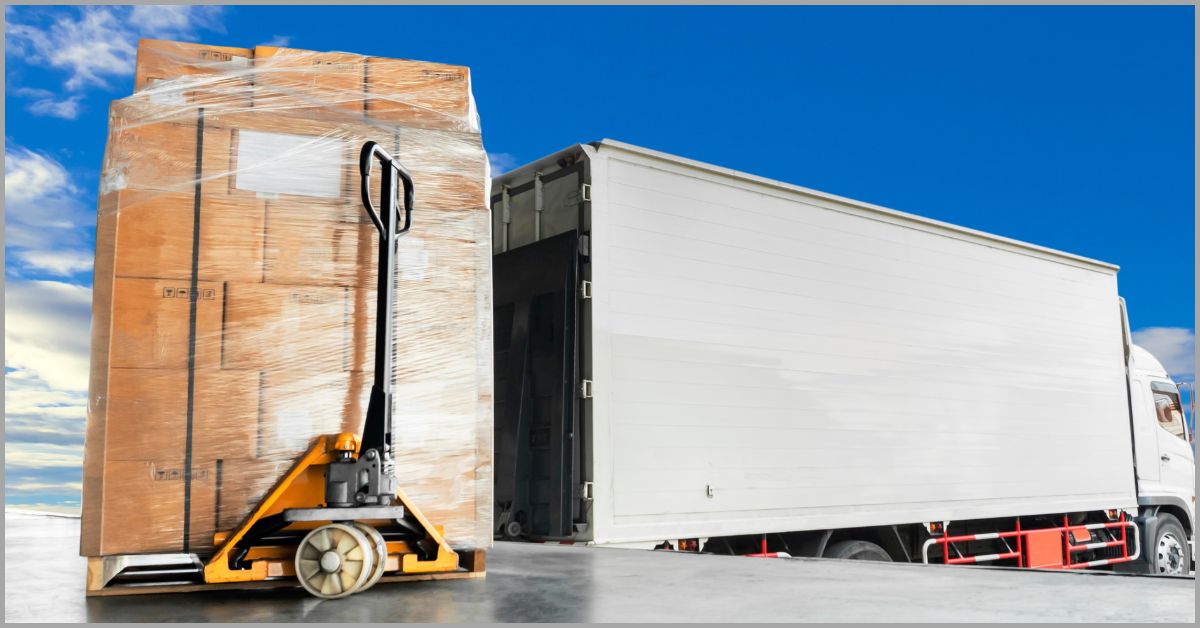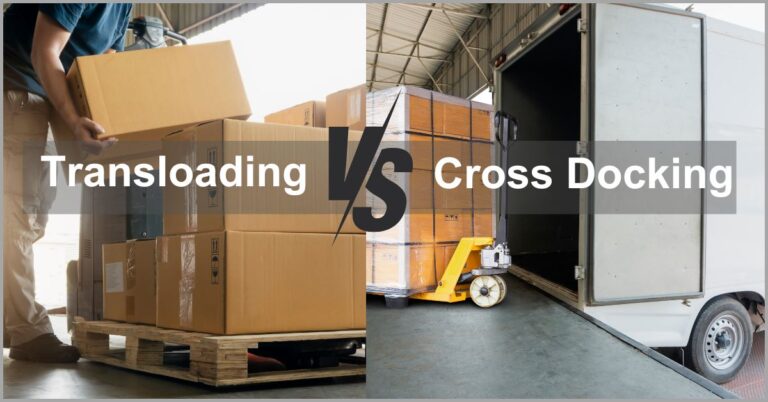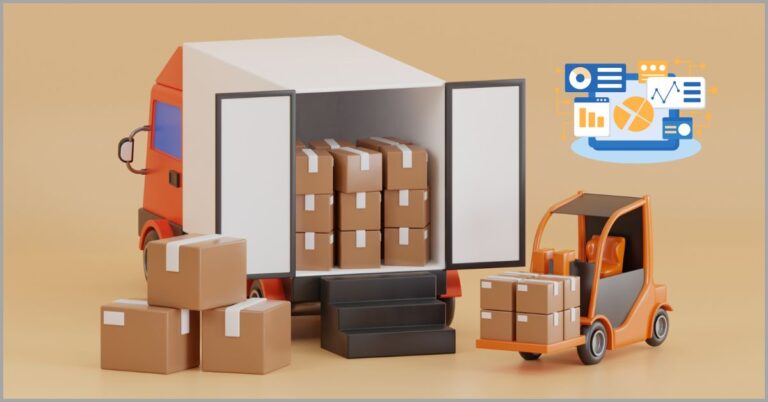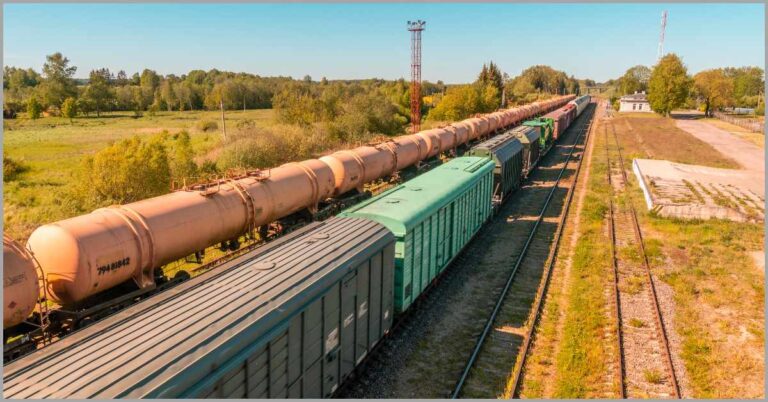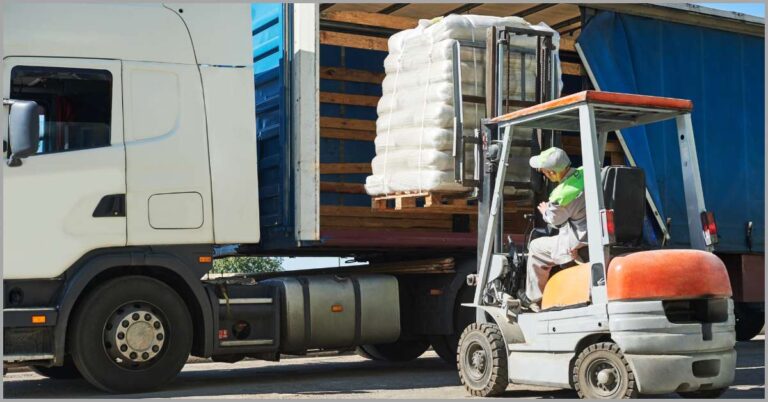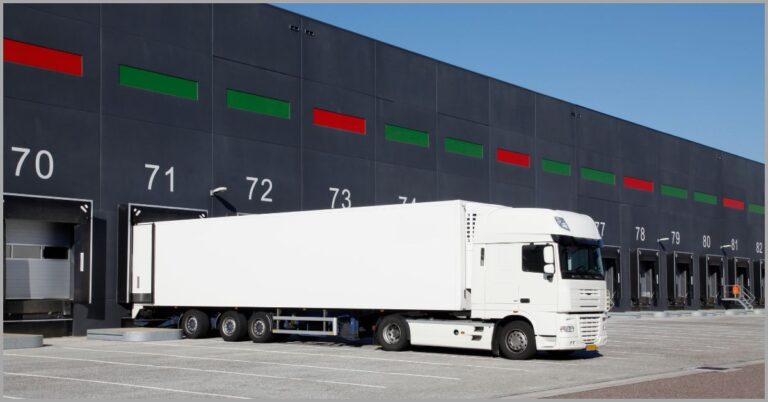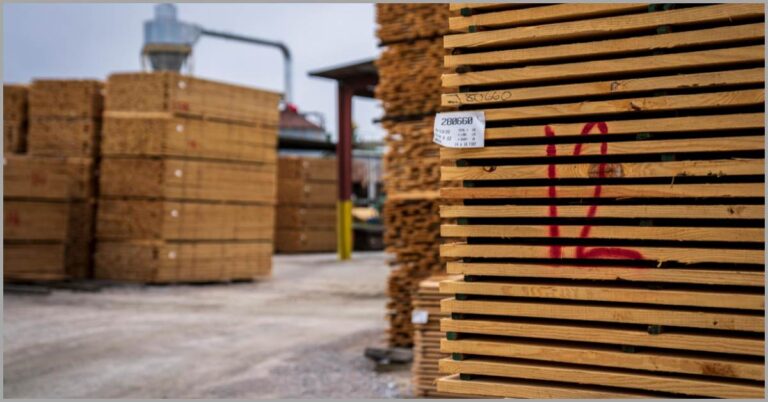10 Main Transloading Challenges and How to Overcome them for Efficient Operations
Want to improve your transloading workflow?
In order to be one of the best transload service companies, you need to raise efficiency.
When your operations are highly inefficient, your transloading business can experience massive time and financial resource losses.
Interestingly, a recent study by Gartner revealed that 41% of businesses plan to implement supply chain changes to address inefficiencies. The top motivation is to plug operational losses which cut into profit margins.
If you’d like to make your business more profitable and increase operational efficiency, understanding the key transloading challenges obstructing your workflow is the first step toward finding remedies that increase your chances of success.
With the solutions we’ll discuss, you’ll be able to improve your transloading processes to make your business more resilient and also give it a competitive advantage.
If you’d like to learn more about sharpening your business’s competitiveness, check out my previous article on warehouse management trends revolutionizing logistics.
In this article, we’ll discuss the 10 main transloading challenges and how to overcome them for efficient operations that can help you improve revenue and accelerate growth.
Let’s get started.
1. Shortage of skilled workers
What skills are necessary in a transload yard?
Transloading is more than just about mindlessly moving material from one form of transportation to another. It requires a variety of essential machine operation and material handling skills.
That said, finding skilled transloading workers can be difficult, and you may rely on a lean workforce which can lead to missed project timelines.
A study by Descartes revealed that 76% of logistics operations face huge worker shortages. As a result, this makes recruiting laborers one of the biggest transloading challenges for businesses.
Beyond delays, labor gaps also limit your operational capacity and your ability to take on more work, resulting in missed business opportunities.
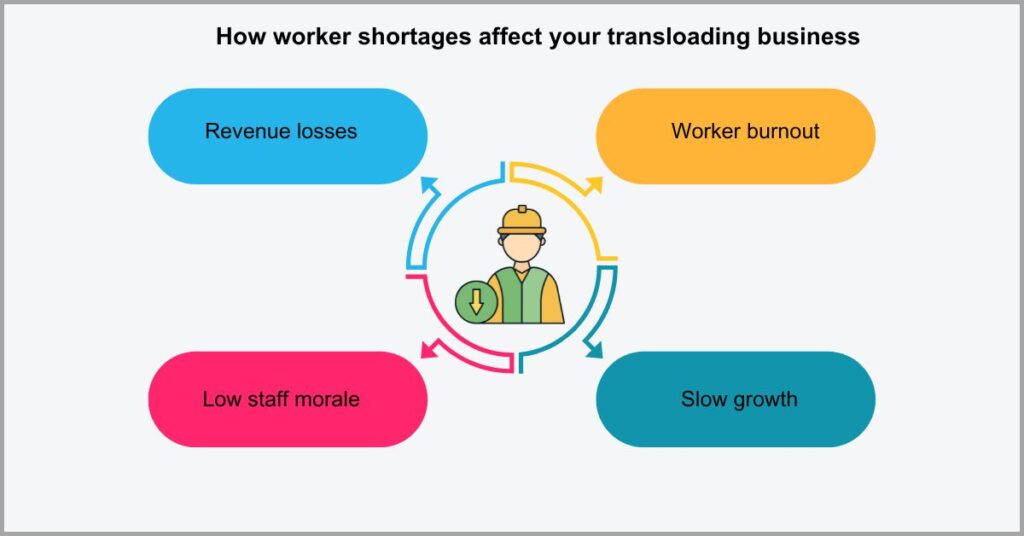
One way to address the skills gap in your transloading business is through automation.
For example, you can capitalize on amazing tech innovations in logistics like automated inventory counting to replace or augment physical inventory reconciliation.
This can make your transload yard more efficient, thus allowing you to increase the work output and quality of your existing staff. Therefore, you’ll be able to get more work done even limited personnel
Click here to start your free trial of transloads.co and explore the full range of our automation features.
With our platform, you can automate iterative tasks like inventory tracking, workforce management and railcar monitoring to cushion the effects of worker shortages.
2. High costs of transloading operations
Profitability is a key concern for most businesses.
The ultimate goal is to keep your overall cost of doing business low. Otherwise, when it takes a lot of financial resources just to run your operations, you may struggle to break even, let alone make a profit.
If you’re unable to eliminate unnecessary costs in your transloading operations, you may need to cut back investment in key areas or take out bad loans.
Unfortunately, a DT survey established that 62% of supply chain leaders expect the cost of doing businesses to increase in 2024. Some of the leading instigators of cost-related transloading challenges included inflation and rising fuel and warehousing expenses.
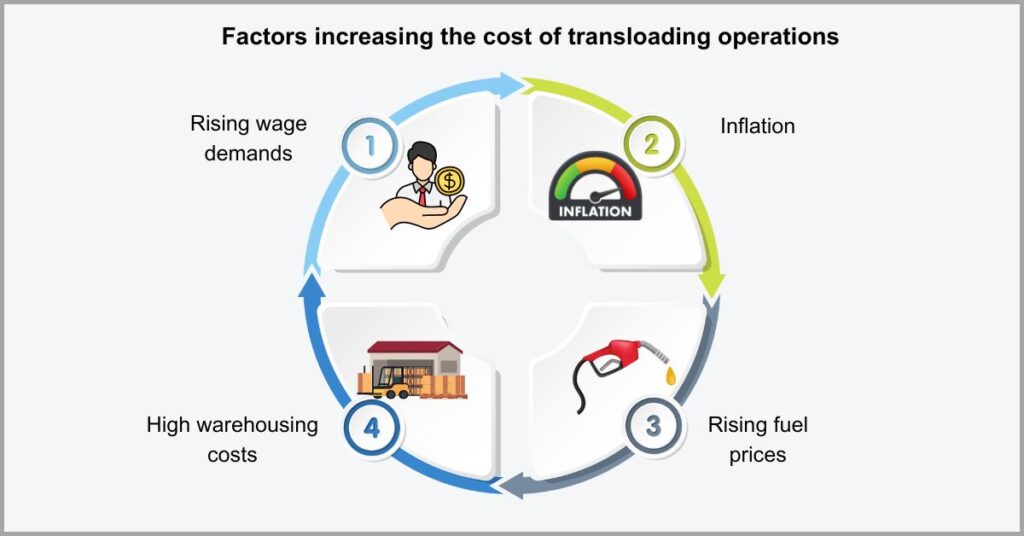
So how can you lower transloading operational costs?
One thing you can do is to explore an alternative place of business. You can downsize to a smaller transload yard if it meets your operational needs or even seek a co-working arrangement so that you can split up costs with a business partner.
Moreover, you can explore profitable warehouse business ideas like freight brokerage, for instance, to help you make even more income out of your yard’s assets during off-peak periods to offset some of the expenses you incur.
Doing this will enable you to expand your transload facility’s revenue streams so that you can sustainably increase the profitability of your transloading operations.
3. Poor container capacity utilization
What is container capacity utilization in transloading?
It simply refers to how efficiently you’ve used space in a container. To calculate your container utilization rate, you’ll need to divide the total available capability by the size or volume of your shipment.
When container capacity utilization is poor, this can result in inefficient operations and resource wastages that erode your profit margins.
A study by Flexport relieved a 64.6% utilization rate for shipping containers in the United States. Unfortunately, this isn’t good enough because many of your top rivals are achieving as high as 90% utilization.
Fortunately, there are several ways to overcome transloading challenges like this one for your business.
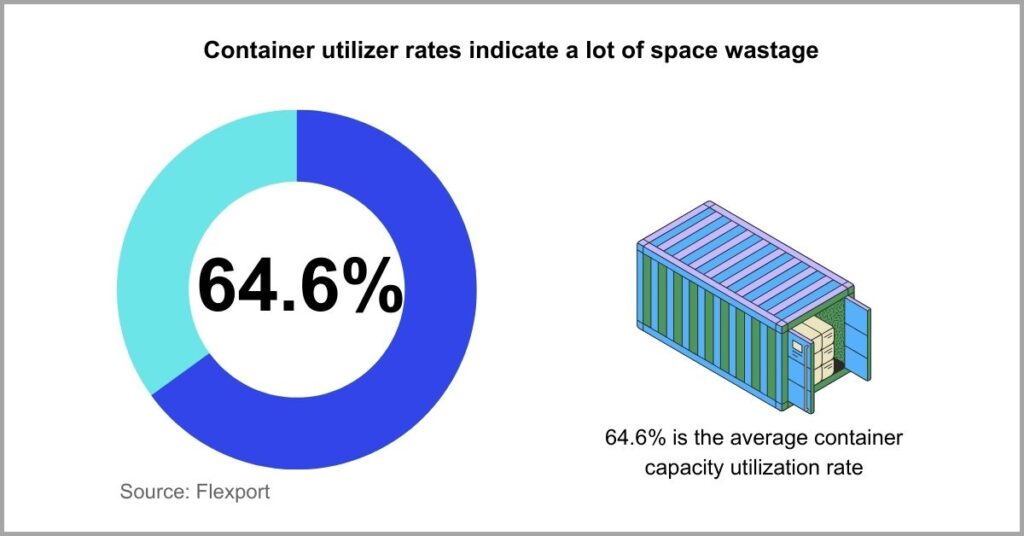
The first way to improve container utilization for your transload shipping service is to palletize goods that you transload into containers.
The top reason for doing this is to enable the stackability of cargo you’re transloading.
I also recommend leveraging cube optimization techniques like stacking, nesting or mixing. Nesting entails placing hollow freight inside each other to reduce empty space, while stacking involves placing cargo on top of each other.
In cases where irregular spaces remain throughout the shipment that are too small to fit a pallet, mixing techniques save the day. You can use boxes and bags of goods to plug these spaces and improve utilization.
4. Accidents during transloading
Transloading can be a very dangerous process.
You have human operators handling huge containers that weigh thousands of pounds while also working in close proximity to forklifts and cranes. All this is certainly a cocktail of disaster just waiting to occur.
When accidents happen, your transloading business suffers significant productivity losses which can also lower employee morale.
Unfortunately, a ResearchGate study revealed that 14.5% of port accidents occur during loading and unloading processes. This makes it the highest leading cause, behind cargo transportation accidents.
If we zero in further on the data, I also discovered many of these accidents resulted primarily from human errors that you can easily avoid.
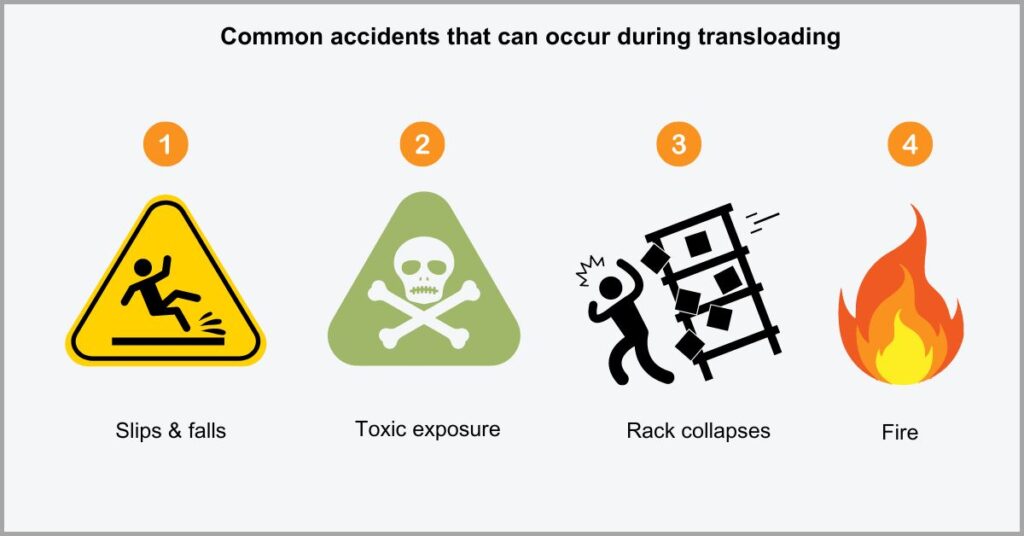
Improving staff safety awareness is therefore important to help prevent transloading injuries. You can achieve this by creating a safety training program.
This should cover important personal protective equipment for the job as well as essential operational procedures, such as clearing the loading area and using labels and signs to reduce the risk of injuries from poor cargo handling.
Maintaining an orderly transloading warehouse is also key to safety and you’ll need to turn to the best B2B warehouse management software to make this happen.
Such a system can help reduce human errors that often lead to worker injury while providing accurate stock information that helps you handle cargo more carefully.
5. Poor inventory visibility
Are you pleased with the visibility of your inventory?
Knowing what cargo was placed where and when is essential for your transloading facility. Without this information, your dock workers will waste time trying to find what they need and prioritizing transload requests.
In addition to greatly lowering your productivity, poor inventory visibility can also increase cases of cargo shrinkage by unscrupulous dock workers.
Unfortunately, a survey by Sixfold established that 57.3% of logistic leaders deal with poor inventory and operational visibility. This creates a ripple effect that increases transloading completion times and damages brand reputation with clients.
If you’d like to improve inventory visibility, I recommend transloading software.
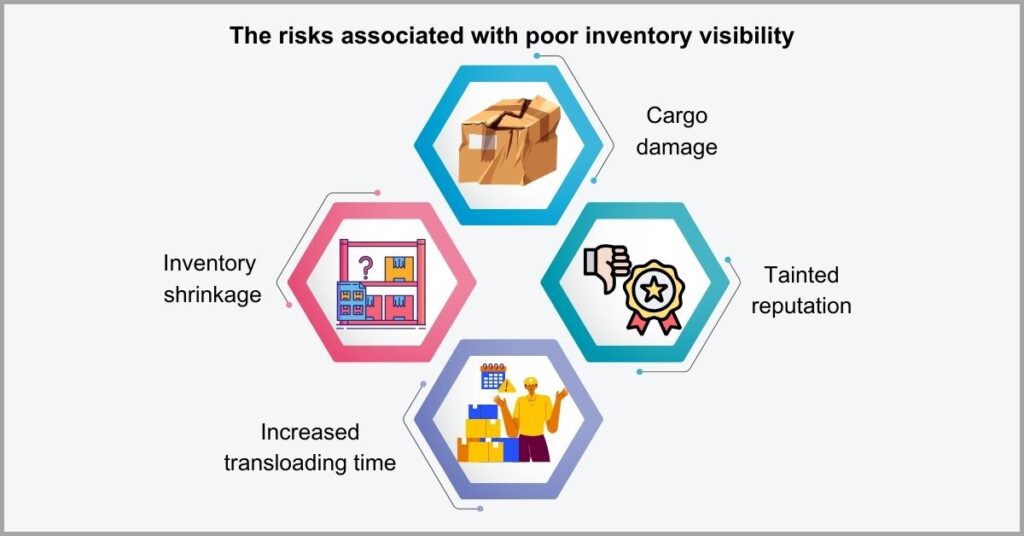
An excellent platform like our very own transloads.co, for example, solves some of the biggest transloading challenges like poor inventory tracking by giving you real-time visibility over inventory.
This is one of the biggest benefits of transloading software, because it can help you accelerate loading and unloading processes and improve transparency as well.
But our solution doesn’t just keep track of inventory in your transloading warehouse.
It goes a step further, giving you timely information about inventory in rail cars that you haven’t tranloaded yet but still need to process. With these features, you can reduce travel time for dock workers and accelerate your transloading processes.
6. Spillage of valuable cargo
Spillage is bound to occur during transloading.
This is particularly commonplace when you’re transferring liquid and bulk cargo like oil and grain between different vessels so that they can fit the requirements of the new transport medium more appropriately.
While spillage is perfectly normal, too much of it can lead to disputes with the client and even compromise worker safety and environmental health.
A study by ITOPF established an average of 6.8 spill incidents per shipment every year. From the statistics I reviewed, this equates to a loss of at least 7 tons for each spill incident alone.
Some of these spilled cargo makes its way into water bodies to cause pollution.
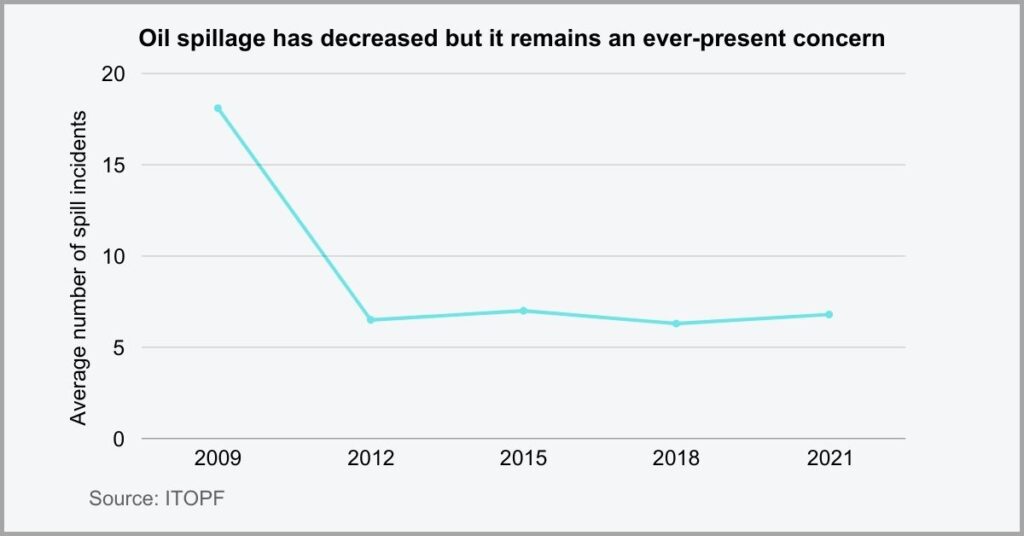
I recommend investing in steel bunding, which is a platform that you place under pallets, drums or intermediate bulk containers to contain spillage.
In case you spill the liquid bulk material, it will drain into this platform. This enables you to contain contamination and retrieve the spills to maintain cargo levels as close as possible to their original levels.
You can also buy spill pallets when starting your transloading warehouse, which prove a less costly solution to using spill bunds but just as effective.
In both cases, you’ll need to choose between plastic and steel pallets or bunding, depending on whether or not you’ll be dealing with corrosive chemicals.
7. Damage of fragile freight
Do you often transload very fragile cargo?
From laboratory materials to stone articles like bricks and marble, your business may receive transloading requests that involve goods that are very delicate.
When you handle fragile cargo poorly, this can cause cargo damage that leads to additional expenses and, worse yet, the loss of loyal customers.
It’s alarming to note that 86% of shippers experienced cargo damages in 2021, according to a study by Flock Freight. The finger of blame was pointed at both careless carriers and transloaders.
If you’d like to reduce the risk of cargo damage for your transloading facility, you’ll need to rethink your loading operations.
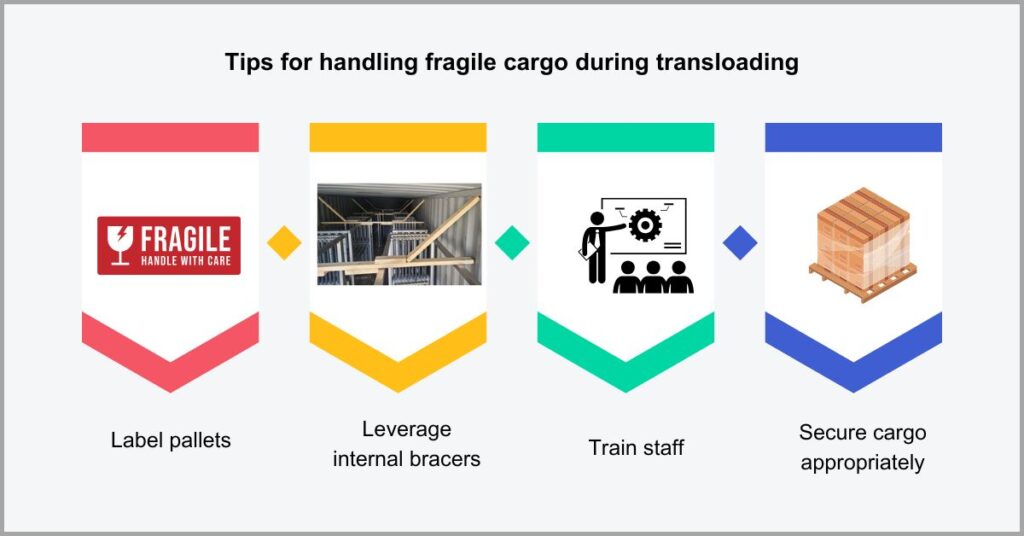
More specifically, you can use internal bracers to prevent contact between fragile units in the same pallet and also label pallets to ensure safe stacking.
To overcome transloading challenges like cargo damage, it’s also important to equip your staff with the right skill sets, and this is where we may be able to help.
Click here to get our transload support services, which entail helping you find and train transload yard workers to reduce the risk of cargo damage.
Beyond upskilling and recruiting staff, we can also help you to optimize yard operations and even set up your yard from scratch to position your transload business for success in a highly competitive industry.
8. Logistics transformation failures
Investing in the right technologies is critical.
You may already be aware of this fact and possibly even implement logistic transformation initiatives to try and incorporate the latest technologies into your workflow.
However, when approached poorly, digital transformation projects for your transload facility can backfire, resulting in huge losses in terms of investment.
The situation is very alarming with 76% of logistic transformation projects not meeting critical performance metrics, going by a recent Gartner study. In other words, most of these initiatives end up in failure.
Some of the reasons why these projects didn’t really take off include internal resistance, change fatigue among workers and very complex technologies.
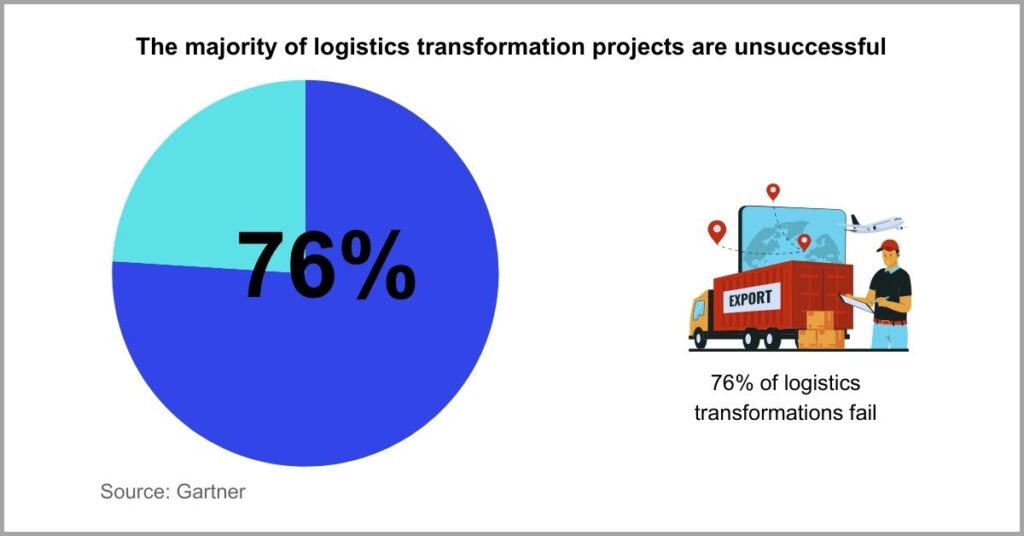
If you’d like to improve your odds of logistics transformation success, it’s important to build the right leadership culture. This entails communicating with your staff, maintaining an adaptable mindset and accommodating their concerns and priorities.
It’s also important to learn how to choose the right transloading software and other logistics transformation technologies at large. Going with a user-friendly system can greatly improve your chances of success.
That’s because it’ll ensure that each of your employees can easily pick up these technologies, thereby getting around internal resistance.
Moreover, you should also have a clear vision for your logistics transformation projects, including clear KPIs to provide direction, focus and guidance for such projects.
9. Coordinating complex logistics
Struggling to coordinate transloading logistics?
Transloading can sometimes quickly turn into a complex puzzle, where you are working with several carriers and shippers, all with different shipping and transloading demands.
If you lack an effective strategy for managing complex logistics, this can lead to inaccurate order fulfilments and very unhappy customers.
Alarmingly, a survey by Indago revealed that 42.4% of businesses rated their logistics and supply chains as “extremely or very complex”. They added that this challenge reduced the ability to respond to changes quickly while increasing transportation costs.
As a result, many of these organizations outsourced part of their logistics coordination needs to relieve the pressure.
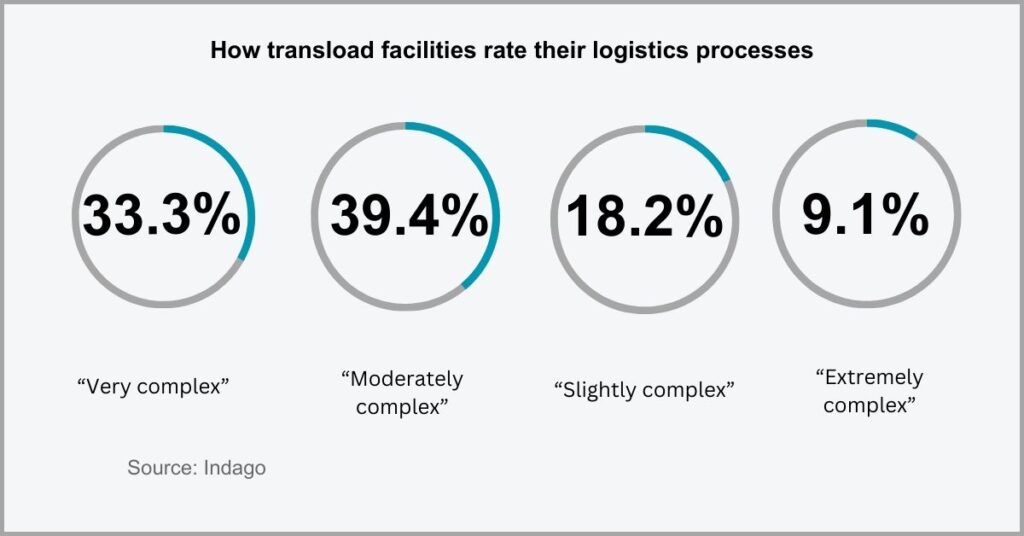
Outsourcing is a great option to consider because partnering with more experienced 3PL logistics providers can help you solve transloading challenges like logistics management, allowing you to focus on your core transloading operations.
If outsourcing isn’t an option, technology can also be a great ally, helping you to centralize logistics intelligence to improve efficiency.
For example, if you go for tools with key transload management features, you can track workers, shippers, carriers and your inventory in one place, and even automate shipment tracking to lower logistical headaches.
The right technologies can overall help you track transportation better and even liaise with carriers via customer portals to fulfill transload requests accurately and promptly.
10. Handling temperature-sensitive items
Your transloading business may handle cold chain cargo.
Cold chain logistics entail dealing with temperature-controlled goods such as pharmaceuticals, foods and beverages that you need to maintain at certain temperatures to preserve freshness or medication efficacy.
During your transloading operations, you may need to transload bulk units of cold chain cargo, thereby risking exposure to excessive heat.
That said, 62% of shippers ranked poor cold chain cargo handling among their main challenges during a Statista survey. They’re worried that if carriers receive shipments at improper temperatures, clients may reject them.
It’s therefore important to improve your cold chain management processes to avoid exposing cargo to quality-degrading heat.
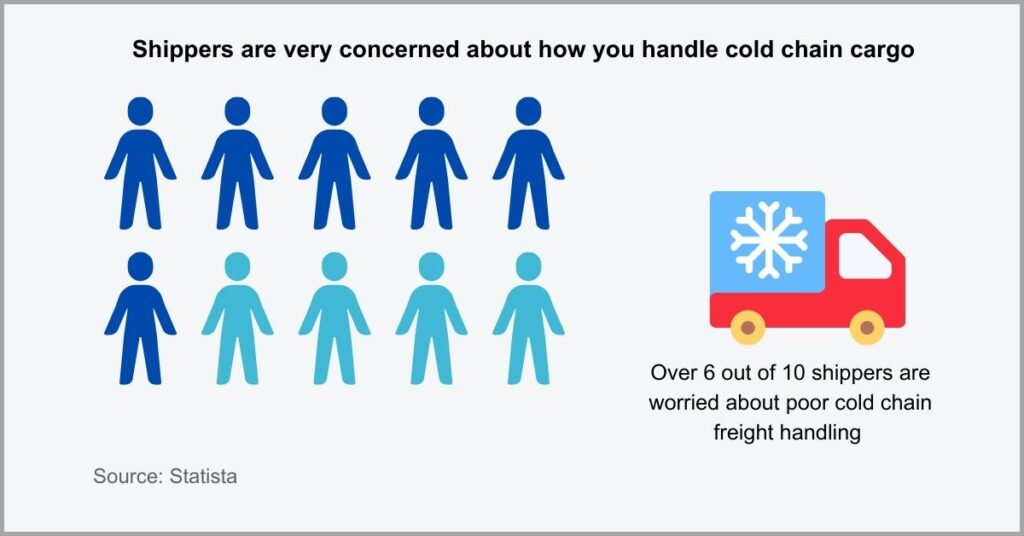
Before you unload temperature-sensitive items, it’s important to confirm the product temperature of the cargo upon reception to ensure you observe these guidelines.
It’s also prudent to tap into tech innovations in warehouses like creating a cold storage zone in your warehouse or docks to maintain optimal temperatures during unloading.
What’s more, you’ll also need to inspect the condition of cooling equipment that the carrier you’re loading to has provided.
This entails checking for proper trailer vent position, such as whether the vents are open or closed, which is key to ensure proper air circulation during translation. You’ll also want to watch for tears in chutes that may hint at defective cooling equipment.
Conclusion
Your transloading business faces strict regulations.
For instance, the government requires that you report & control waste emissions.
Failure to observe environment regulations can lead to fines and other non-compliance penalties from authorities like the US EPA.
In fact, a study by Statista revealed that 32% of 3PL companies said managing compliance and regulations is one of the biggest issues they face. A driving factor is poor visibility over transloading processes that leaves risks unattended.
You can solve transloading challenges like regulatory loopholes, skilled worker shortages, and high operation costs by investing in technology. The right platform can give you real-time data about your processes to simplify compliance tracking.
Click here to start your transloads.co trial now to get essential compliance-monitoring capabilities for your transloading facility.
With our software, you also get other key transloading features to help you improve inventory, accounting and workforce management to boost overall efficiency.

